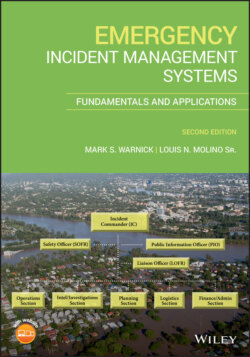Читать книгу Emergency Incident Management Systems - Mark Warnick S., Louis N. Molino Sr - Страница 31
1.4.12 A Lack of Interoperable Communications
ОглавлениеCommunications incompatibilities were extremely evident. Even when refined and technologically advanced communications systems were in use for more than one agency, they were often mismatched with mutual aid organizations. Interoperability was often nonexistent. This lack of interoperability could be for a multitude of reasons including being on different frequencies, or in some instances, they were on different bandwidths (e.g. low band, UHF, VHF, ultrahigh band). When this occurred, there were no interoperable or interagency communications.
Agencies often purchased communications equipment and secured frequencies that fit their needs. These agencies rarely had any consideration for agencies that might come to their rescue. While there were a multitude of reasons for this, it is important to note that in some instances, agencies had used the same frequencies for years. In some cases, it was tradition over progress. Another factor that may have fed into the lack of consideration for other agencies is that it typically took a long time for the Federal Communications Commission to approve new frequencies, and many agencies did not want to wait. Additionally, radio equipment was expensive and to revamp an entire radio system would come with a large price tag. In all, the problem occurred because the systems that differing agencies used were technologically incompatible.
While operating at an incident, the agency might be able to literally see the other agency, but they did not have the capacity to (verbally) speak to each other over a communications device. The distance might only be a few hundred yards, but it might as well have been a couple of hundred miles. Lack of interoperability between communication devices was a major problem then, and it still is now.
